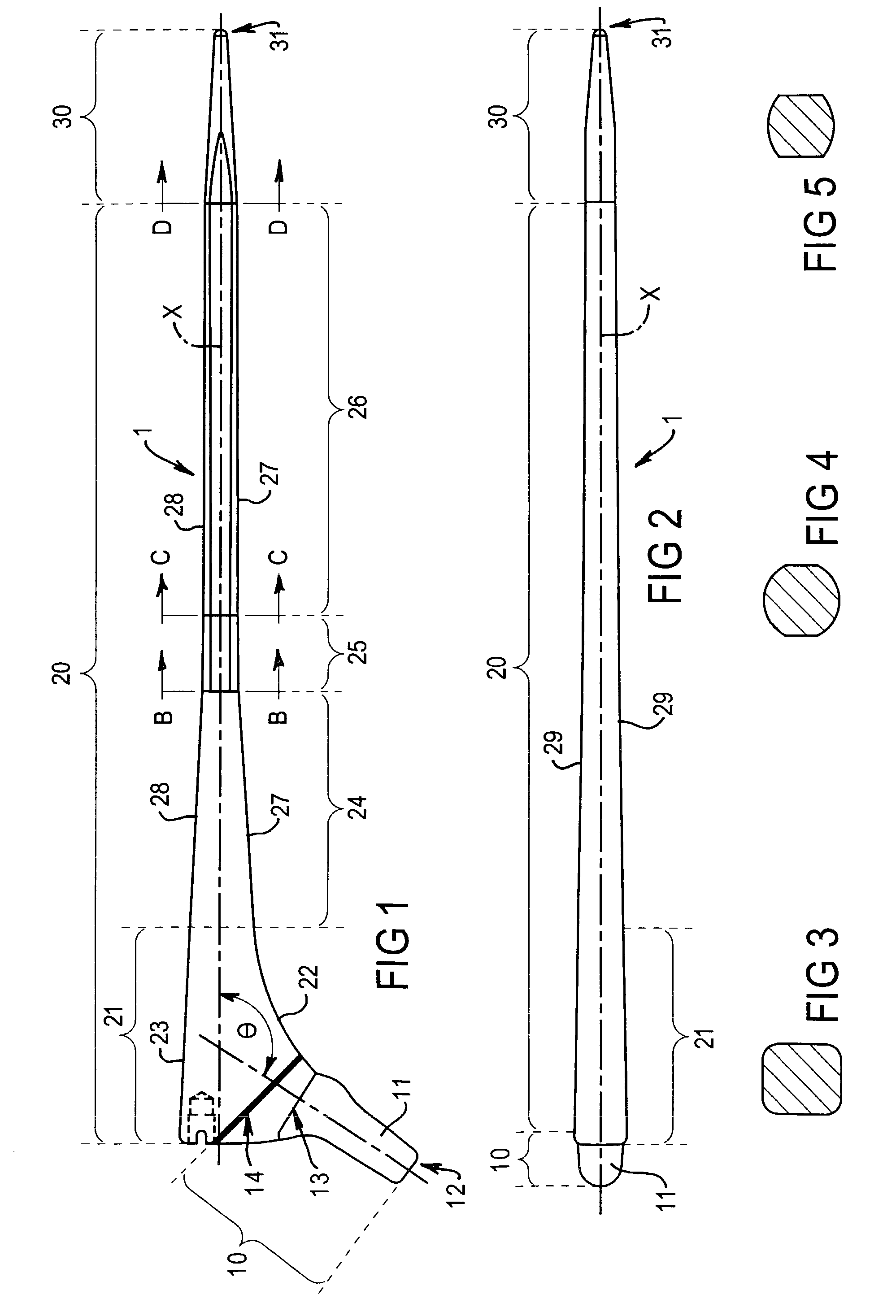Prosthetic implant
a prosthetic and implant technology, applied in the field of prosthetic implants, can solve the problems of difficult extrication from their cemented position within the bone, inability to provide optimal load transfer to the surrounding bone structure in use, etc., to enhance the compression or pressurization and thickness distribution of the cement mantle, and enhance the fit of the implant within the bone. , the effect of improving the stress distribution to the bon
- Summary
- Abstract
- Description
- Claims
- Application Information
AI Technical Summary
Benefits of technology
Problems solved by technology
Method used
Image
Examples
Embodiment Construction
[0038]Referring to FIG. 1 of the drawings, the invention provides an integrally formed elongate femoral implant (1) having a proximal neck portion (10), an elongate stem portion (20) extending distally from the neck portion (10) and a distal tip portion (30). The implant (1) is for insertion within the intramedullary canal of a femur during hip-replacement surgery.
[0039]The proximal neck portion (10) includes a frusto-conical stub (11) projecting at the most proximal end region of the neck portion. This stub (11) has a free end (12) and continues from its other end (13) to join with the stem portion (20). A line (14) across the neck portion (10) effectively marks the extent of the neck portion, which in use projects from the proximal end of the femur. This line (14) also marks the point to which cement is applied when the implant is embedded in the femur.
[0040]The stub (11) provides means for attaching a ball-joint articulation device (not shown). Specifically, this conical stub (11...
PUM
 Login to View More
Login to View More Abstract
Description
Claims
Application Information
 Login to View More
Login to View More - R&D
- Intellectual Property
- Life Sciences
- Materials
- Tech Scout
- Unparalleled Data Quality
- Higher Quality Content
- 60% Fewer Hallucinations
Browse by: Latest US Patents, China's latest patents, Technical Efficacy Thesaurus, Application Domain, Technology Topic, Popular Technical Reports.
© 2025 PatSnap. All rights reserved.Legal|Privacy policy|Modern Slavery Act Transparency Statement|Sitemap|About US| Contact US: help@patsnap.com


